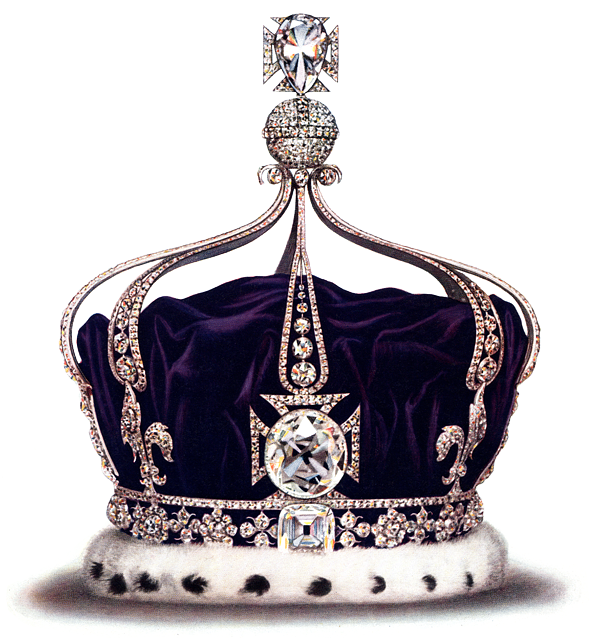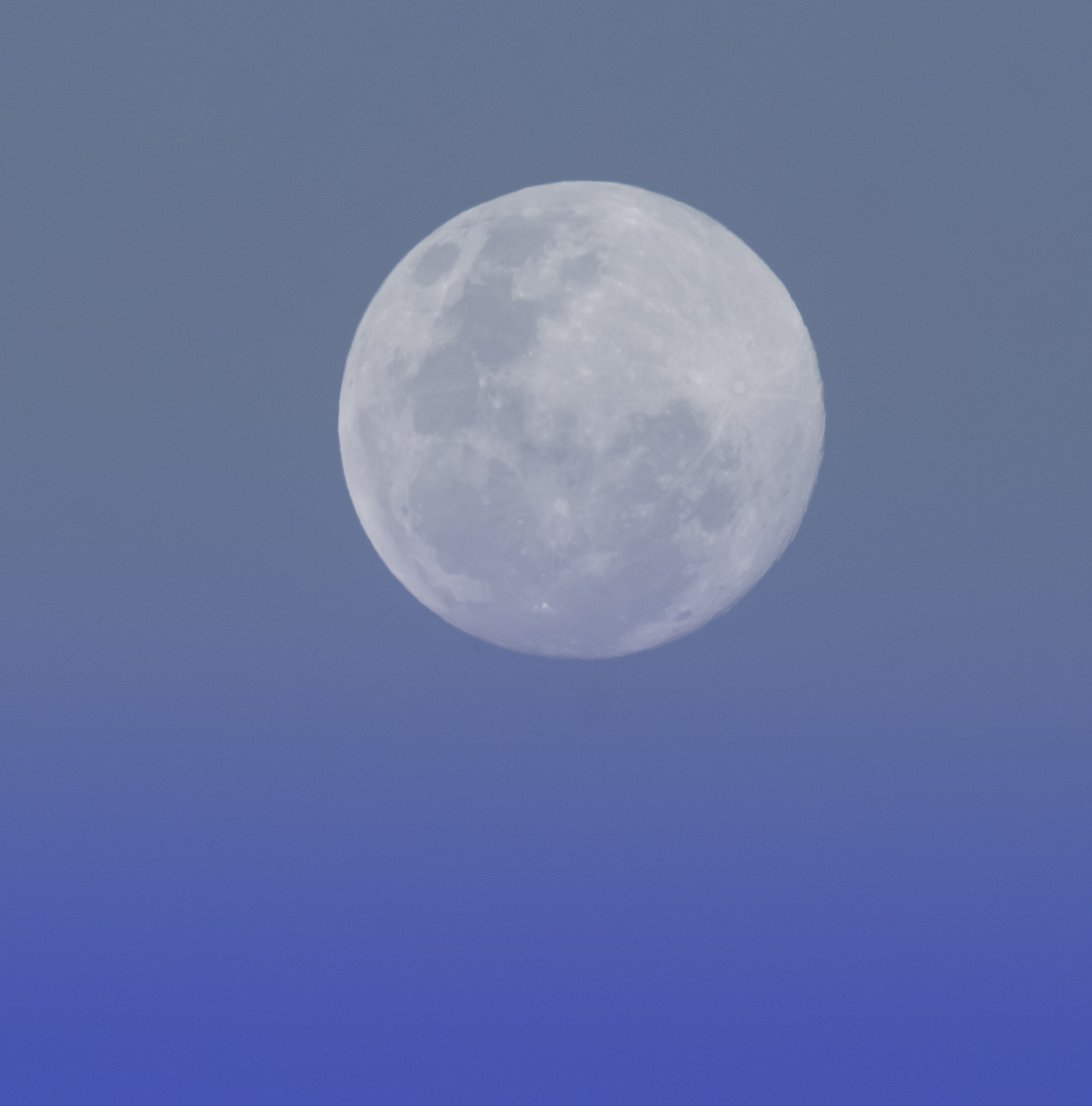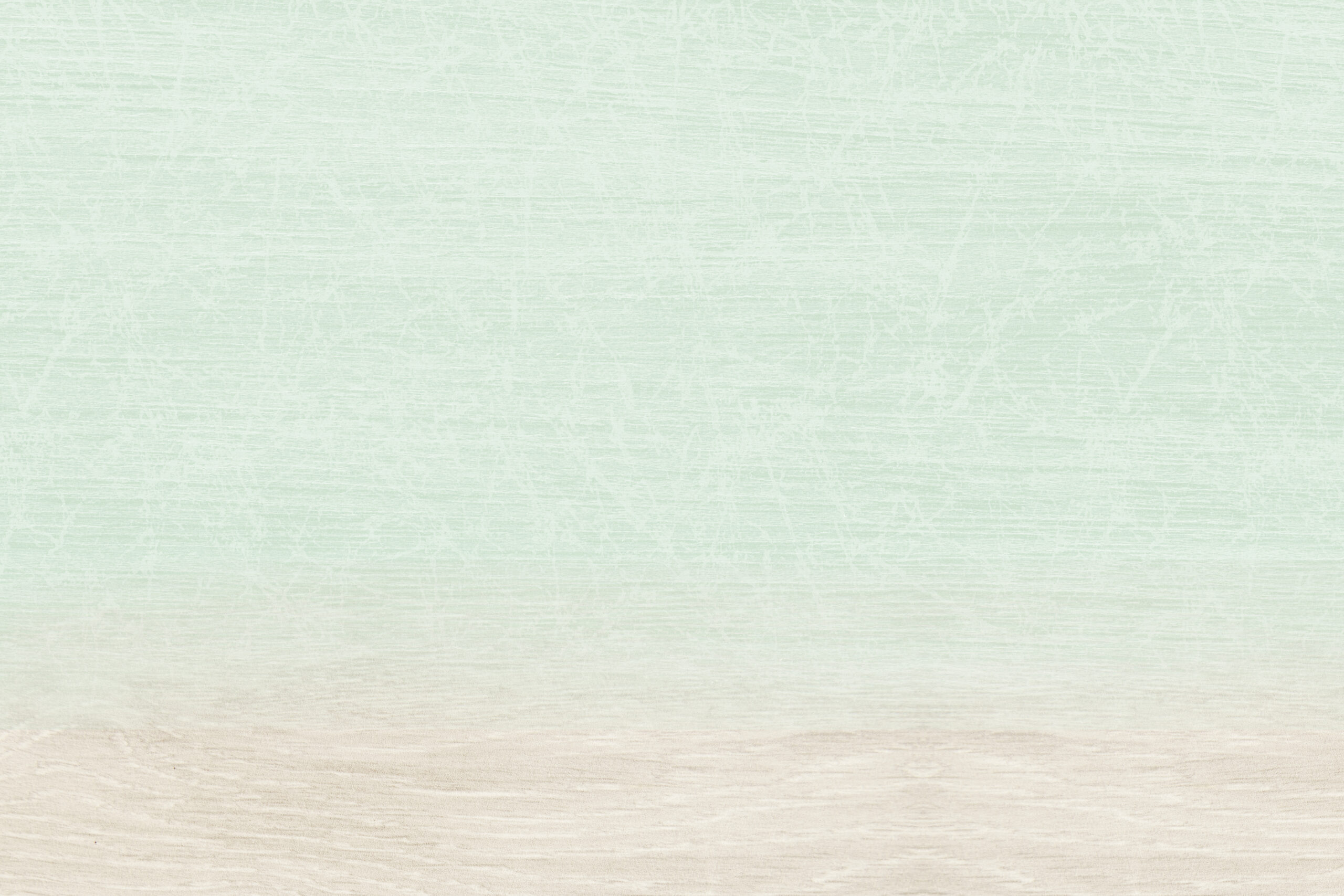A Little History
On the 6th of May 2023 King Charles III will be crowned the 62nd monarch the British Isles has had since the Saxon times, and that means there is going to be a lot of glittering jewels on display in the 2nd televised coronation in British history. One of the things that many associate with the British Royal Family is the Crown Jewels, and it’s understandable to see why; the Crown Jewels are a magnificent collection of items used in coronations throughout the centuries. I must add, during the English Civil War many of the original jewels were melted and or sold off by Cromwell and his Commonwealth. When rulership was returned to Charles II in 1660 there was a problem, there was no Coronation Regalia – aside from a spoon that was first recorded in 1349 and was saved from being melted down during the Civil War.
The Crown Jewels and Royal Regalia predominantly date to the time of Charles II and it is believed that most of what will be seen on the 6th May is from around this time period. The most important item in the coronation is the St Edwards crown, which will be placed on the head of Charles III at the moment he is coronated. This is the only time in a monarch’s reign that it is used, and outside of this it is kept in the Jewel House in the Tower of London. The original St Edwards Crown was considered a Holy Relic, and while that crown no longer exists, the other versions that have crowned the Kings and Queens since Charles II is the same size and weight as the original, while it has been tweaked over the years – the arches are a different style to the original. The second most important crown is the one most of the world is familiar with, the Imperial State Crown which again dates to the 1600’s, but the crown you see today was made in 1937 for King George VI, and the arches were altered in height for Queen Elizabeth II – I believe that the original sized arches from 1937 will be used for King Charles III.
…Now to the good bit… the gems
The Gems in the Jewels
As you can imagine there is an incredible assortment of gems on display in the Jewel House and will be on display during the coronation. Some of these gems have a rich legend attached and I will go into those a little later.
The St Edwards Crown has an impressive 345 Aquamarines, 37 White Topaz, 27 Tourmalines, 12 Rubies, 7 Amethysts, 6 Sapphires, 2 Jargoons (Golden Zircon), 1 Garnet, 1 Spinel and a Carbuncle (Almandine Garnet).
The Imperial State Crown has a staggering 2868 Diamonds (including the Cullinan 2), 273 Pearls, 17 Sapphires (including the Stuart Sapphire and the St Edwards Sapphire), 11 Emeralds, 5 Rubies (one of which is a Spinel).
The Sovereign’s Sceptre has the jaw droppingly astonishing Cullinan I, which came from the largest gem quality diamond found, and at 530.2 carats it is the largest colorless cut diamond in the world. The Cullinan Diamonds were numbered from 1 to 9 and the largest of them was put into the scepter. Aside from the Cullinan the scepter also includes 332 other Diamonds, 31 Rubies, 15 Emeralds, 7 Sapphires, 6 Spinels and a composite Amethyst.
The Sovereign’s Orb has a modest 365 Diamonds, 375 Pearls, 18 Rubies, 9 Sapphires and 9 Emeralds, 1 Amethyst and glass stone (cannot find much about the glass piece).
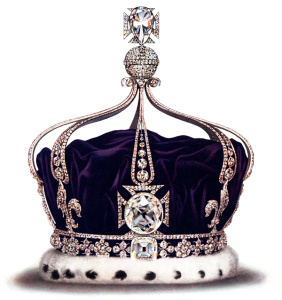
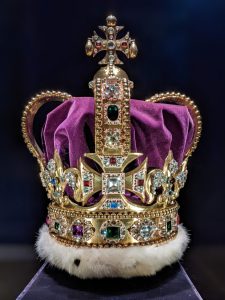


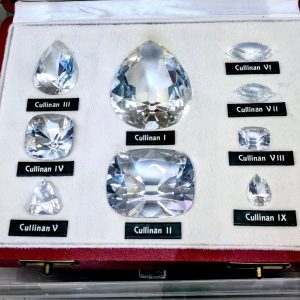
Metaphysical Properties of the Gems in the Jewels
Each of the gems I have listed above all have their own magical and healing properties, so let’s look at the gems in detail.
Diamond – Diamonds are the hardest mineral on the planet, coming in at 10 on the Mohs Scale, and with this has come some amazing modern uses of the diamond, but traditionally Diamonds have been a symbol of wealth, strength, and status. It is a favorite of royalty all over the world, and throughout history there are many Diamonds with myths and legends attached to them. The Diamond is a master healer much like Quartz, but the Diamond is far stronger with its effects and amplification. The properties of the Diamond include:
Strength, Bravery, and Courage
Creativity, Ingenuity, and Imagination
Connection to the Divine
Stimulates the Chakra System
Represents Purity and Innocence
Fearlessness and Fortitude
Clarity and Clear Thinking
New Beginnings and Joy
Clears Blockages
Associated with the Sun
Diamonds absorb energy like a sponge, and will amplify this absorbed energy, so a level of care needs to be taken when working with Diamonds and will need to be thoroughly cleansed regularly. Diamonds also come in a range of colors due to inclusions within the stone during its formation.
Yellow Diamonds are formed through the Presence of Nitrogen. Yellow Diamonds represent kindness, consideration, and compassion.
Orange Diamonds are formed through the same process as Yellow Diamonds, except with different amounts of Nitrogen.
Blue Diamonds are formed through the presence of Boron. Blue Diamonds represent the strength of our willpower.
Black Diamonds are formed through the presence of Graphite. Black Diamonds represent the courage to look within and to see past illusions.
Grey Diamonds are formed through the presence of Hydrogen and/or Boron in combination.
Brown/Champagne Diamonds are formed like Yellow Diamonds, but they have a higher Nitrogen content present.
Green Diamonds are formed through the presence of Nitrogen, Hydrogen and Nickel along with a complex process of radiation.
Purple Diamonds are formed through the presence of Boron and Hydrogen.
However, some coloured Diamonds occur due to their atomic structure being different in some way like the cases of Red and Pink Diamonds. Pink Diamonds represent the courage to express your own truth.
Aquamarine – Aquamarine has long been associated with water; its name literally means “Water of the Sea”. The cool blue-green tones evoke the visions of crystal-clear waters on far away tropical beaches. Aquamarine is 7.5 to 8 on the Mohs scale, meaning it is quite tough but weaker than Diamonds and Corundum. The properties of Aquamarine include:
Cleansing
Serenity, Peace, and Tranquillity
Inspiration and Prophecy
Inner Power and Strength
Meditation
Calming and Soothing
Associated with the Throat Chakra
Happiness and Joy
Hope and Growth
Protection when traveling on water.
Pearl – Pearls aren’t really your typical “gem” in that it is actually an organic compound that forms because of a defense system against irritants inside Shellfish like Oysters and Mussels. When an irritant such as a grain of sand gets inside the shell, the animal’s defense system secretes a layer of a substance called Nacre around the irritant. These layers will build up over a period of weeks or months and eventually become a pearl. The Pearl is very low on the Mohs scale, only reaching 2.5. Care should be taken when wearing Pearls as they are quite soft and can be damaged easily. The properties of Pearl include:
Purity and Innocence
Honesty and Integrity
Focus and Concentration
Meditation and Wisdom
Associated with the Moon and Water.
Feminine Energy
Associated with the Crown Chakra
Pearls absorb energy like a sponge, as such they need to be cleansed regularly, and often require a rest period between being worn.
Sapphires – Sapphire is a member of the Corundum family, and that magical blue-indigo color is often the most captivating feature. As a member of the Corundum family, it is still at 9 on the Mohs scale, which means it is only slightly softer than the Diamond. It is a tough stone with a gentle energy. The properties of Sapphire include:
Creativity and Expression
Psychic Protection and Intuition
Clears away self-imposed blockages.
Creativity and Depth of Thought
Fidelity and Leadership
Removes unwanted thoughts and aids relief of depression, anxiety, and tension.
Associated with the Brow Chakra
Sapphires come in a range of colors due to the inclusions present during its formation. There is also something known as a “Star Sapphire” which features an asterism, causing a star-like effect under bright light.
White Sapphires are ‘colorless’ which means they formed with no inclusions. White Sapphires bring wisdom, strength, purity and opens the mind. It is associated with the Crown Chakra.
Blue Sapphires are formed due to the presence of Iron and Titanium. Blue Sapphires do come in a range of shades, which are determined by the amounts of each inclusion.
Yellow Sapphires are formed due to the presence of Iron. Yellow Sapphires are related with courage, confidence, and balance. It is associated with the Solar Plexus Chakra.
Pink Sapphires are formed due to the presence of Chromium. Pink Sapphires symbolise love, compassion, loyalty and wisdom and self-mastery. It is associated with the Heart Chakra.
Orange Sapphires are formed due to a combination of Chromium (Red) and Iron (Yellow). It can also be created through exposure to a certain level of natural radiation. Orange Sapphires represent creativity, wisdom, and inner power. It is associated with the Sacral Chakra.
Padparadscha Sapphires are formed due to extreme temperatures and the presence of Beryllium. Padparadscha Sapphires are associated with compassion, generosity, kindness, and love. It is associated with the Heart Chakra and Sacral Chakra as it has an orange-pink hue.
Green Sapphires are formed due to the presence of Iron, a greater amount than is present in a Yellow Sapphire. Green Sapphires symbolize tranquility, calmness. Trust, loyalty, and integrity. It is associated with the Heart Chakra.
Purple Sapphires are formed due to the presence of Chromium and trace amounts of Vanadium. Purple Sapphires represent wisdom and spiritual awakening. It is associated with the Brow Chakra.
Brown Sapphires are formed due to the presence of Titanium and Iron. Brown Sapphires represent deep concentration, and connection. It is associated with the Root Chakra.
Star Sapphires occurs due to needle-like inclusions of Rutile which react with the light to form a Star over the surface. Star Sapphires come in nearly every color, but Yellow, Orange and Green Star Sapphires are extremely rare and hard to find. Star Sapphires represent faith, hope, destiny, and protection.
Ruby – Rubies are the red variety of Corundum, which means it is related to the Sapphire. The definition of a Ruby is any form of Red Corundum, and it is the presence of Chromium during the formation process that makes a Ruby, a Ruby. Anything that is not red is classified as a Sapphire (see above). As part of the Corundum family the Ruby is a 9 on the Mohs scale, it is a tough stone with a powerful energy. The properties of Ruby include:
Love and Nurturing
Passion and Desire
Wealth and Prosperity
Abundance and Generosity
Loyalty and Honour
Compassion and Kindness
Kundalini Energy
Earth Healing
Free yourself from guilt, and anxiety
Associated with the Heart Chakra
Ruby vs Pink Sapphire – Ruby and Pink Sapphire are both members of the Corundum family, and are both chemically the same, having Chromium as the inclusion creating its color. While they are the same in this respect, they are different in one important way. The amount of Chromium which dictates the color, and it can be extremely difficult to tell what a darker Pink Sapphire and a lighter Ruby is. The price of the gem is also a way to differentiate between the two as Pink Sapphire is not as expensive as Ruby. The ‘best’ and most expensive Rubies come from Burma, but Thailand, Sri Lanka and Cambodia are close behind. While Pink Sapphires are found in Sri Lanka and Burma, they have also been found in Madagascar and Tanzania.
Spinel – The Spinel is often mistaken for Rubies, but they are their own special gem. Spinels are 8 on the Mohs scale and come in a range of colors. It is often found in areas where Corundum is found. When a Spinel is found it can look identical to a Ruby, and without specialist scientific equipment, it is nearly impossible to tell with the eye. The properties of the Spinel include:
Setting aside of the ego
Devotion and Love
Relieves Stress and Anxiety
Eases exhaustion and refills energy.
Physical and Mental stamina
Letting go of Baggage.
Associated with all the Chakra system.
The Spinel is another gem (like the Pink Sapphire) that is often confused with Ruby, but Spinel doesn’t just form in Red. Spinels are rarer than Rubies but have not classically been treated as such.
Red Spinel is formed due to the presence of Chromium. Red Spinel is associated with the Heart and Root Chakra.
Blue Spinel is formed due to the presence of Cobalt and a little Iron. Blue Spinel is related to peace and tranquility. It is associated with the Throat Chakra (and darker forms are associated with the Brow Chakra)
Violet Spinel is formed due to the presence of Manganese. It is associated with the Brow and Crown Chakras.
Green Spinel is formed due to the presence of Cobalt and a small amount of Manganese. Green Spinel relates to saving your energy and increasing your physical and mental stamina.
Pink Spinel is formed due to the presence of Chromium. Pink Spinel represents passion, devotion, and love. It is associated with the Heart Chakra.
Black Spinel is formed due to Magnesium Aluminate and is the rarest form of Spinel in the world. Black Spinel represents the removal of negativity, empowerment, and protection from being overwhelmed. It is associated with the Root Chakra.
Emerald – Emerald is one of the three famous “precious gems” that is a rich green. The Emerald sits at a 7.5 to 8 on the Mohs scale, so it is quite tough, but a certain amount of care is needed. Emerald is a member of the Beryl Family which is formed due to the presence of Chromium and Vanadium. Emeralds tend to be included and the more clarity the emerald has, the more expensive the gem will be. The more vivid the color the more desirable it is. The properties of Emerald include:
Balance and Patience
Inspiration and Creativity
Friendship and Harmony
Domestic Bliss and Unconditional Love
Intelligence and Truth
Memory Function and Communication
Joy and Love
Faith and Serenity
Associated with the Heart Chakra
Unlike the other classical ‘precious gemstones’ (Diamond, Sapphire, and Ruby) Emerald only comes in variations of green, but they are only ever green. If you have a pale Emerald, it is likely to be another form of Beryl. Natural Emeralds will have inclusions 99% of the time, and unlike other gems you want to have them. If you find an Emerald that does not have inclusions or is extremely clear it is likely to be a synthetic or man-made emerald.
Amethyst – Amethyst are one of the few semi-precious gems in the crown jewels and sit at a 7 on the Mohs scale. Amethyst is a member of the quartz family, and it is formed due to the presence of Iron, which has been altered by natural radiation giving it it’s purple hue. Amethyst is a popular crystal in the metaphysical and spiritual communities and is possibly the most affordable gem in the Crown Jewels, though they will be of gem quality. The properties of Amethyst include:
Relieves Stress and Strain
Soothing and Balancing
Dispels Anger and Rage
Alleviates Grief and Sadness
Spiritual Awareness
Intuition and Psychic Abilities
Protection and Shielding
Aids Sleep and Dream Recall
Higher Consciousness and Angelic Realms
Associated with the Brow Chakra
Amethyst does form in different colors, such as pink and black, but there is a green variety of Quartz which is known as Green Amethyst. Some believe that Citrine is the same as Amethyst, but I will explain that below.
Black Amethyst is formed due to the presence of Hematite along with the Amethyst. Black Amethyst is known for its psychic protection while grounding you, keeping you balanced. It is associated with the Brow Chakra and the Earth Chakra.
Pink Amethyst is formed due to the presence of Iron and Manganese along with the Amethyst’s Iron inclusions. Pink Amethyst connects their heart and the spirit, creating peacefulness. It is associated with the Heart and Brow Chakra.
Green Amethyst aka Prasiolite is another name for Green Quartz, which is commonly produced by artificially irradiating Amethyst. There is a small amount of Prasiolite (the proper name of the green coloured quartz) that has gone through this heating process naturally, but these are extremely uncommon. Prasiolite is a gem of attraction, be it prosperity or creativity., it also helps to transmute negative energy. It is associated with the Heart Chakra.
Amethyst is also heated to between 450 and 550 degrees Celsius creating a yellow to dark yellow to orange color which is sold as Citrine. While chemically they both contain Iron impurities, however, the Iron in Citrine is oxidized. The color is a result of… rust. There is a process which causes a gem to be part Amethyst (Purple) and Citrine (Yellow) known as Ametrine, and I believe it has been exposed to radiation.
White Topaz – Topaz is one of the semi-precious gems in the Crown Jewels and it sits at 8 on the Mohs scale, it is a tough stone, but it still requires a little bit of care. The gems that feature in the Crown Jewels are White Topaz, which means it does not contain any impurities at all, which is what causes the colouration. The properties of Topaz include:
Stimulates and Re-charges.
Abundance and Generosity
Truth and Forgiveness
Healing and Joy
Strength of Loyalty
Wisdom and Enlightenment
Love and Good Fortune
Associated with all the Chakras (individual colors relate to individual Chakras too)
As I mentioned above, Topaz comes in a wide range of colors, which are caused by impurities in the growth process.
Blue Topaz is formed due to the presence of Aluminium and Fluorine. Blue Topaz come in a variety of shades known as Sky Blue Topaz, London Blue Topaz to name a few. Natural Blue Topaz is rare, and in recent years production of artificially altered Blue Topaz have been created. Blue Topaz relates to communication, and expression in all forms and promotes emotional wellbeing. It is associated with the Throat Chakra
Yellow Topaz is due to a combination of the presence of Chromium, and an imperfection in the atomic structure. The presence of a little Chromium causes the yellow shades. Yellow Topaz is related to confidence, charisma, draws love in and attracts wealth and abundance. It is associated with the Solar Plexus Chakra.
Green Topaz is due to white/colorless Topaz being exposed to chemicals in a process called Diffusion Treatment. Green Topaz is related to joy, generosity, abundance, and candor. It is associated with the Heart Chakra.
Pink Topaz is due to the presence of Chromium, and the amount of the impurity is what dictates the color. The amount of Chromium is what dictates the color going from pink to red and even purple. Pink Topaz is related to love, forgiveness, and tranquility. It is associated with the Heart Chakra.
Red Topaz is due to the presence of Chromium, and the amount of the impurity is what dictates the color. The amount of Chromium is what dictates the color going from pink to red and even purple. Red Topaz is related to confidence, passion, courage, and strength. It is associated with the Root Chakra.
Orange Topaz is due to a combination of the presence of Chromium, and an imperfection in the atomic structure. The amount of Chromium present causes the orange shade. Orange Topaz is related to stabilization, strength, healing, optimism, and optimism. It is associated with the Sacral Chakra.
Purple Topaz is due to the presence of Chromium, and the amount of the impurity is what dictates the color. The amount of Chromium is what dictates the color going from pink to red and even purple. Purple Topaz relates to spiritual wisdom, spiritual advancement, prayer and connection between the Brow and Heart Chakra. It is associated with the Brow and Heart Chaka.
Brown Topaz is due to a combination of the presence of Chromium, and an imperfection in the atomic structure. The more Chromium present causes the brown shade. Brown Topaz relates to bringing forth talents and skills without fear, openness. It is associated with the Root Chakra.
Grey Topaz is created through the process of radiation by UV rays or Gamma Rays to colorless Topaz, but this color is unstable and is likely to fade from the crystal, leaving it colorless once again. Grey Topaz’s creation means that it has the same properties of White Topaz, and such is associated with all the Chakras.
“Mystic” Topaz is created using a colorless Topaz, which is then coated with a thin layer of Platinum in a process called Physical Vapour Deposition. Mystic Topaz relates to good fortune, clarity of communication, understanding and promotes a positive attitude. It is associated with the upper Chakra from Heart to Crown.
Tourmaline – Tourmaline is one of the softer gems used in the Crown Jewels sitting at a 7 to 7.5 on the Mohs scale, which means there is a level of care that needs to be taken when wearing Tourmaline. While Tourmaline features on the St Edwards Crown, I can only find that 2 have been confirmed as Pink Tourmaline and Paraiba Tourmaline. The properties of Tourmaline include:
Balances Yin and Yang
Compassion and Tolerance
Releases Tension
Protection and Shielding
Reduces Fear and Builds Confidence
Bridge Between the Spiritual and Physical worlds.
Transmutes energies from Negative to Positive.
Associated with all the Chakras depending on the colour.
Tourmaline is most common in Black but there are a range of color and color combinations which can be used for a range of uses. Tourmaline is a gem that benefits from regular cleansing due to its associated with transmuting energy. Tourmaline is a Boron Silicate mineral, and the colors are produced by impurities during its growth process.
White Tourmaline is created with the lack of any impurities and some are created by exposing light coloured Tourmaline to radiation, which can make them colorless. White Tourmaline is related to balancing the Chakras and cleansing the Aura. It is associated with all the Chakras, especially the Crown Chakra.
Black Tourmaline (Schorl) is formed due to the presence of Iron Oxide. Black Tourmaline is related to grounding and protection. It is associated with the Root Chakra.
Green Tourmaline (Verdelite) is formed from either Chromium being present (forest greens) and the brighter, lighter greens get their color from the presence of copper. Green Tourmaline is related to awareness of the heart and how you feel and what you desire. It is associated with the Heart Chakra.
Blue Tourmaline is formed by the presence of Iron Oxides in its complex chemical composition. Blue Tourmaline is related to peace, deep meditation, and the Spirit. It is associated with the Throat and Brow Chakra.
Pink Tourmaline is formed due to the presence of Manganese. Pink Tourmaline is related to love, compassion, emotional healing, and calming one’s emotions. It is associated to the Heart Chakra.
Red Tourmaline to Dark Pink Tourmaline (Rubellite) is formed due to the high Lithium content there is an intense saturation of color. Rubellite is related to compassion, gentleness, friendship, sympathy, and encouragement. It is associated with the Heart Chakra.
Yellow/Gold Tourmaline is formed due to the presence of Manganese like with the Pink, the difference is a complex atomic structure and electrons. Yellow Tourmaline is related to joy, happiness, and optimism. It is associated with the Solar Plexus Chakra.
Brown Tourmaline (Dravite) is formed due to the presence of Sodium, Magnesium and Aluminium. Brown Tourmaline is related to deep cleansing, and protection. It is associated with the Root and Earth Chakras.
Gray Tourmalines are part of the Elbaite category as they are not specifically gray, rather a combination of variations causing a gray color.
Uvite Tourmaline is formed due to the presence of Calcium and Magnesium, and the combination in varying amounts can change the color from green to brown to a deep red. Uvite Tourmaline is related to awareness of reality, diminishing fear, and confidence within oneself. It is associated with the Root Chakra.
Elbaite Tourmaline is formed due to the presence of Lithium, Aluminium and Sodium. It is known as Bi-Coloured Tourmalines, which will have a combination of impurities creating its colors. Elbaite relates to calming of the nerves, emotional healing and compassion. It is associated with the Earth and Heart Chakra.
Liddicoatite is formed due to the impurities of Lithium, Aluminium and Calcium and is another bi-coloured Tourmaline and is nearly chemically identical to Elbaite, except it has Calcium Impurities. Liddicoatite is related to insight with conflict and struggles by dispelling illusions. It is associated with the whole Chakra system.
Paraiba Tourmaline is formed due to the combination of Copper and Boron. The combination of these two minerals can dictate the color the stone will be. Paraiba Tourmaline relates to insight, creativity, wisdom, and communication. It is associated with the Throat (and controversial Thymus Chakra).
Siberite Tourmaline (Purple) is formed due to the presence of Copper and Manganese. Siberite Tourmaline is associated with spiritual wisdom and intuition. It is associated with the Brown and Crown Chakras.
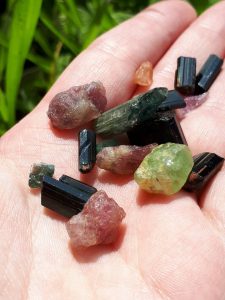
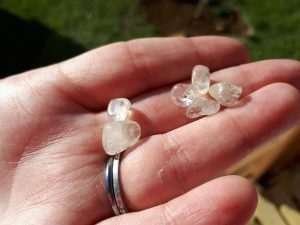
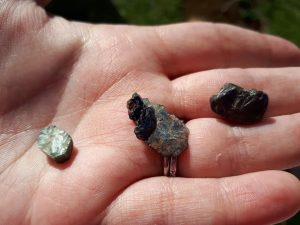
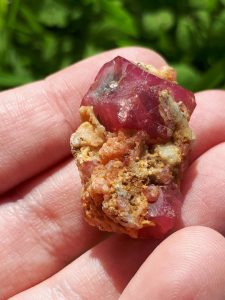
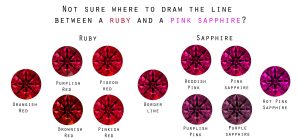

The Famous Jewels
In the Crown Jewels there are famous individual gems which have folklore, legends or myths associated with them. From the incredible Cullinan Diamond to the Black Prince’s Ruby, which isn’t a Ruby and to the famous Sapphires in the Imperial State Crown. If you watched the coverage of Queen Elizabeth II’s funeral last year, the commentator Alister Bruce spoke about some of these precious gems. One important thing to remember about the Crown Jewels is they are not allowed to leave the shores of the UK by act of Parliament. During the second world war they were taken and safely hidden in Welsh mountains.
Hanging Pearls on the Imperial State Crown – Attached to the arches and orb and cross on the top of the Imperial State Crown are four Pearls. These pearls are said to have been originally owned by Catherine de’ Medici, who gave them to her daughter in law Mary Queen of Scots. It is also said that Queen Elizabeth wore them after the death of Mary, Queen of Scots. This is likely a romantic legend as some of the pearls didn’t arrive in the Royal Collection until the 1800’s.
Black Prince’s Ruby – This isn’t technically a Ruby, but at the time of the Black Prince (1300’s) it wasn’t possible to scientifically classify it as a Spinel, and assumed it was a Ruby due to its color. This gem is a 170 carat, unfaceted stone which sits at the front of the Imperial State Crown. The gem was pierced at some point, and in a documentary a few years ago Clive Myrie comments that it looks like there is a bore hole through the piece, meaning it may once have been worn as a pendant. There is a long history to this gem, and dates back to at least the 1300’s. The piece started out in the hands of the Sultan of Grenada, but was then stolen by Pedro the Cruel in 1371, and was given to Edward, the Black Prince as thanks for offering Pedro shelter along with many other treasures. The Black Prince’s Ruby was worn on the helm of Henry V at the battle of Agincourt, where it is believed to have saved his life, though when Richard III wore it in the Battle of Bosworth it didn’t manage to save him. It is said that those who wear the Black Prince’s Ruby will have a short and troublesome reign, but with Queen Elizabeth II having a long, healthy, and celebrated reign of 70 years means that needs to be rethought. The pin that fills the hole is a genuine Ruby though. It is believed to have been sold during the Civil War and either given back, or sold back to the crown in 1660. There is no proof of this, but I do like the idea of it surviving that chaotic time.
The Stuart Sapphire – The Stuart Sapphire once sat below the Black Prince’s Ruby, but when the Cullinan II was added to Imperial State Crown it was moved to the back of the circlet band. The Stuart Sapphire is a 104 carat oval shaped Sapphire which has blemishes within. Like with the Black Prince Ruby a hole has been drilled for it to be worn as a pendant. Tradition states that the Sapphire was part of the Scottish Crown and when Edward Longshanks aka The Hammer of the Scots took the gem from the crown as well as the Stone of Scone [pronounced Sk-oon]. It is initially believed that it was first worn by Alexander II of Scotland during his coronation. The stone remained in purely English hands until it was given to the founder of the Stuart House in Scotland and when James V (of Scotland) became James I (of England) and once more it found its way firmly into Stuart hands. The last of the Stuarts of the legitimate line gave this and other items to King George III leading it to be placed in the Imperial State crown around the time of Queen Victoria.
The St Edwards Sapphire – The second legendary Sapphires in the Imperial State Crown lies at the center of the cross and is St Edwards Sapphire. This is possibly the oldest gem within the Crown jewels, and according to legend it once belonged to Edward the Confessor (c 1047-1066), who is said to have worn it during his coronation, and upon his death was buried with him. A hundred years after his death, his resting place was opened and his coronation items removed and were used to coronate subsequent monarchs. There is an amazing legend that goes with this Sapphire, in which it is said that Edward the Confessor gave the ring to a beggar, who turned out to be St John the Evangelist. However, there is no proof that this particular stone belonged to Edward, let alone the legend with John the Evangelist. When the medieval Crown Jewels were scrapped, melted or sold during the civil war, King Charles II had to reform the Crown Jewels and Coronation Regalia, and it may have been that he created the modern iterations using what he could find, or what was returned to the crown. This Sapphire wasn’t added to the crown until at least Queen Victoria. It is small in terms of the other Sapphire in the Imperial State Crown, but that does not mean it is not a beautiful example of a Sapphire.
Koh-i-Noor Diamond – Before I start, this diamond is a politically hot topic here in the UK now, and while I am not disregarding this, I am focusing purely on the legends of the gems and how they came to be in the crown’s possession. This diamond is believed to go back to the time of the Mughal Empire and comes from the Indian subcontinent. During this time, it is said that the Koh-i-Noor Diamond sat in the Peacock throne, and when Nadir Shah invaded the Mughal Empire he took the Peacock Throne and many of the treasures, which included the famous Diamond. Nadir Shah transported these treasures from Delhi to Iran and how it passed through the hands of others to Shah Shujah Durrani sold the gem to the leader of the Sikh empire, and he got it because he sought it out. It is believed that whoever had the gem, has the power and dominion over men. It came to England after the Anglo-Sikh war and was given to a young boy named Duleep Singh who was adopted by a British diplomat, and Lord Dalhouse organized the shipping to the UK. It was a massive hit at the Great Exhibition. The Koh-in-Noor we see today in the Crown of the Queen Mother is not the one that originally arrived in England. It was cut and reshaped to make it more magical, as its name is said to mean Mountain of Light. It does have a bloody past where it’s said a brother blinded his brother to have the Diamond, and misfortune befalling male owners of the gem, and as such it was decided that only women would wear it, and it has been placed in the Queen Consort crown ever since. Queen Camilla will not be wearing a crown containing the famous piece due to the political tension surrounding it.
The Cullinan Diamonds – Saving the showstoppers for last, and that is the series of Diamonds cut from the 3,106-carat raw Diamond found in South Africa. This Diamond was found in 1905 and is still to this day, the largest diamond to be found. It was named after the owner of the mine, Thomas Cullinan. For a long time, it sat for sale, and despite interest it was finally brought two years later by the Transvaal Colony, and their Prime Minister gifted it to King Edward VII as a token of loyalty to the Throne and King. In 1908 it was decided that Joseph Asscher of Amsterdam (the best gem cutter in the world at the time) and he was asked to cleave, cut, and polish the raw stone into various sizes and shapes. He studied the stone for many weeks, and when it came to cleaving it, it took a number of attempts as the first steel knife broke. In all the raw Diamond was cut and polished into nine major stones sitting collectively at a whopping 1,055.89 carats, and 96 minor brilliants, and some other small unpolished fragments. The Diamonds cut from the Cullinan were graded in the 1980’s as Type IIa which means only 1-2% of Diamonds in the world are of this quality, meaning they are exceptionally clear with little to know imperfections within the stone. As the gems were given to the King, George V had the biggest two stones placed within the Crown Jewels and Royal Regalia. He understood that they were given to the crown, not to be hidden away but to be shown and displayed as symbols of monarchy and empire – during the early 1900’s the British Empire was still going strong.
Cullinan I – The Great Star of Africa. This is the biggest piece cut from the raw Diamond and weighs a whopping 530.2 carats and today sits within the Sovereign’s Sceptre, an important part of the Coronation Regalia. When the Cullinan was added to the scepter, it needed to be redesigned. Queen Mary (wife of George V’s wife) wore the Cullinan I and II as a brooch. She had a love of jewelry and was often bedecked with glittering jewels. It is on display in the Tower of London throughout the year and was last seen on 19th September 2022 during her funeral when they were removed from her coffin in St George’s Chapel in Windsor as a symbol that her reign was over. It will next be seen on the 6th May during the coronation of King Charles III.
Cullinan II – The Second Star of Africa. This is the second largest stone cut from the raw Cullinan Diamond, and weighs a respectable 317.4 carats and sits in the Imperial State Crown below the Black Prince’s Ruby. Queen Mary paired the Cullinan II with the Cullinan I as a very grand and show-stopping brooch. The Imperial State Crown is on display in the Tower of London, and is used for the State Opening of Parliament each year. The last time it was seen was during the Queen’s Lying in State and funeral in September last year, where it sat atop her coffin.
Cullinan III – The Lesser Star of Africa. This is the third largest stone cut from the raw stone and weighs a respectable 94.4 carats. When Queen Mary was crowned in 1911, she set this stone into the cross atop (known as a cross pattée) the crown she personally purchased for the event. Queen Elizabeth II often wore the Cullinan III and IV as a brooch. When Camilla is crowned in May she will be wearing Queen Mary’s Crown, which has the Cullinan III and IV situated, and will have the addiction of the Cullinan V – the Cullinan V was added to the crown when Queen Mary wore it as a circlet (no arches) to the coronation of her son in 1937.
Cullinan IV – The Lesser Star of Africa (too). This is the fourth largest stone cut from the raw stone and weighs a nice 63.6 carats. This piece was also set in Queen Mary’s coronation crown on the circlet band and was subsequently removed in 1914. The Cullinan III and Iv were worn as a brooch by Queen Elizabeth II and revealed that these are known as “Granny’s Chips” referring to her grandmother Queen Mary. This is another piece that will be part of Queen Camilla’s crown during the coronation in May. The Cullinan IV was purchased from Asscher directly by King Edward VII for his wife Queen Alexandra, and upon his death, she passed the stone down to her daughter in law Queen Mary. When Queen Mary died in 1953 she left these along with a plethora of other jewels to her granddaughter, Queen Elizabeth II.
Cullinan V – The Cullinan V is an 18.8 carat heart shaped gem cut from the raw stone and has primarily featured in a brooch that was worn by Queen Mary in 1911 at the Delhi Durbar (where King George V and Queen Mary were crowned Emperor and Empress of India). As the Koh-i-Noor Diamond won’t be in Queen Mary’s Crown for Camilla’s coronation, the Cullinan V will be added in its place. How the Cullinan III, IV and V will be configured isn’t quite clear and it is likely we won’t know this until the coronation itself on May 6th.
Cullinan VI to IX – These are the smallest of the gems cut from the raw stone, and come in at an understated 11.5 carats (VI), 8.8 carats (VII), 6.8 carats (VIII) and 4.39 carats (IX). These last four stones have been used in conjunction with each other and other pieces of the Cullinan to form a number of brooches. Cullinan XI is the smallest of the nine primary stones placed in a ring, naturally called the Cullinan XI Ring, which Queen Elizabeth II has been photographed wearing in the past.
The Ninety-Six Minor Stones – Joseph Asscher sold some of the minor stones back to South Africa, who eventually distributed them between several people, including Queen Mary and the Prime Minister of South Africa at the time. Where these pieces are now, I cannot say with any surety because they are not as famous or as well documented as the nine major stones.
Other Famous Gems
These aren’t the only famous gems in the Tower of London, or considered part of the Crown Jewels, Coronation Regalia or the Royal Jewellery Collection.
The Coronation Necklace and Earrings – The early reign of Queen Victoria wasn’t smooth sailing when it came to jewels, and after being told by a court she had to return certain jewels belonging to Queen Charlotte needed to be returned to her (Victoria) cousin. However, in 1858 Queen Victoria had an incredible necklace and earrings created from diamonds elsewhere in the collection and the Lahore Diamond. They came to be known as the Coronation Necklace and Earrings as all the Queens Consorts and Queen Regnant have worn this pairing during their own coronations, and the last to wear them was Queen Elizabeth II at her coronation in 1952. We have not yet heard if Queen Camilla will be wearing the set to her coronation. The Necklace alone weighs a staggering 161 carats. The Earrings were created from Diamonds that were sitting alongside the Koh-i-Noor Diamond (see above) and made into a pair which matched nicely with the necklace.
The Lahore Diamond – The Lahore Diamond is a 23.5 carat pear-shaped pendant stone worn on the Coronation Necklace. This stone came from the Lahore Treasure Hold in Pakistan, and though its life in the hands of the British didn’t come until 1849. The British Empire spanned much of the globe and sadly, those doing the colonizing liked to offer their monarch (Queen Victoria) treasure from the region, and the Lahore Diamond was one of these gifts. The Lahore Diamond was offered to Queen Victoria in 1851 and was recut to bring out its brilliance and initially added to the Timur Ruby Necklace, and then it was added to the newly created Coronation Necklace in 1858. The Lahore Diamond has been worn by five consecutive Queens. Queen Victoria, Queen Alexandra, Queen Mary, Queen Elizabeth (The Queen Mother) and Queen Elizabeth II. Will Camilla be the sixth Queen (and fourth Queen Consort) to wear the Lahore Diamond, or will it suffer the same political upheaval as the Koh-in-Noor has.
The Timur Ruby – Like with the Black Prince’s Ruby is a 352.54 or 361 carat Spinel, which has been polished, but unfaceted and features in a necklace. Like the Koh-in-Noor and Lahore Diamond, the Timur Ruby began its life in the far off reaches of the Indian subcontinent. The gem has been engraved with the names of four people believed to have once owned the gem, while one added his name and that of his father. It is believed that the earliest owner of the stone was Timur, the founder of the Timurid Empire, which means it was found at least in the 14th Century. However it is also suggested that Timur never owned the gem, which means its origin is even more mysterious. After that the Timur Ruby changed hands a few times, and went from India to Iran, to Afghanistan and eventually went back to India. In 1813 the stone was in possession of the leader of the Sikh Empire. When Ranjit Singh died in the 1840’s it eventually was passed between his sons. The British Empire went to war with the Sikh Empire and after the conflict the owner of the gem was very young. Duleep Singh was removed from his homeland along with some sizable jewels and taken to Britain. The Timur Ruby (along with the Koh-I-Noor) was offered to Queen Victoria. In 1853 Queen Victoria had a gold setting made for the Timur Ruby (which was identified as a Spinel), which could be changed out in place of the Koh-i-Noor or Lahore Diamonds. The Timur Ruby hasn’t been seen in public for a long time, and likely to its history and potential political nature won’t be seen for a while.
Sources
The Royal Collection: https://www.rct.uk/
Wikipedia: www.wikipedia.com
Reena Ahluwalia: https://www.reenaahluwalia.com/
The Court Jeweller: www.thecourtjeweller.com
The Gemmological Association of Great Britain: https://gem-a.com/
Flight to Wonder: https://flighttowonder.com/
Town and Country: https://www.townandcountrymag.com/
Celestial Earth Minerals: http://celestialearthminerals.com/
GeologyIn: https://www.geologyin.com/
Gemstone7: www.gemstone7.com
Gem Society: www.gemsociety.org
Simon G Jewellery: www.simongjewelry.com
Gemstone Magnetism: www.gemstonemagnetism.com
Minerals.Net: www.minerals.net
Orgonite Crystal: www.organitecrystal.com
Gems N Gems: https://www.gemsngems.com/
Philophosyne: www.philophrosyne.com
Geology Page: www.geologypage.com
The Crystal Council: www.thecrystalcouncil.com
Gemporia: www.gemporia.com
Truly Experiences: www.trulyexperiences.com
Diamonds and Rocks: www.diamondsnrocks.com
